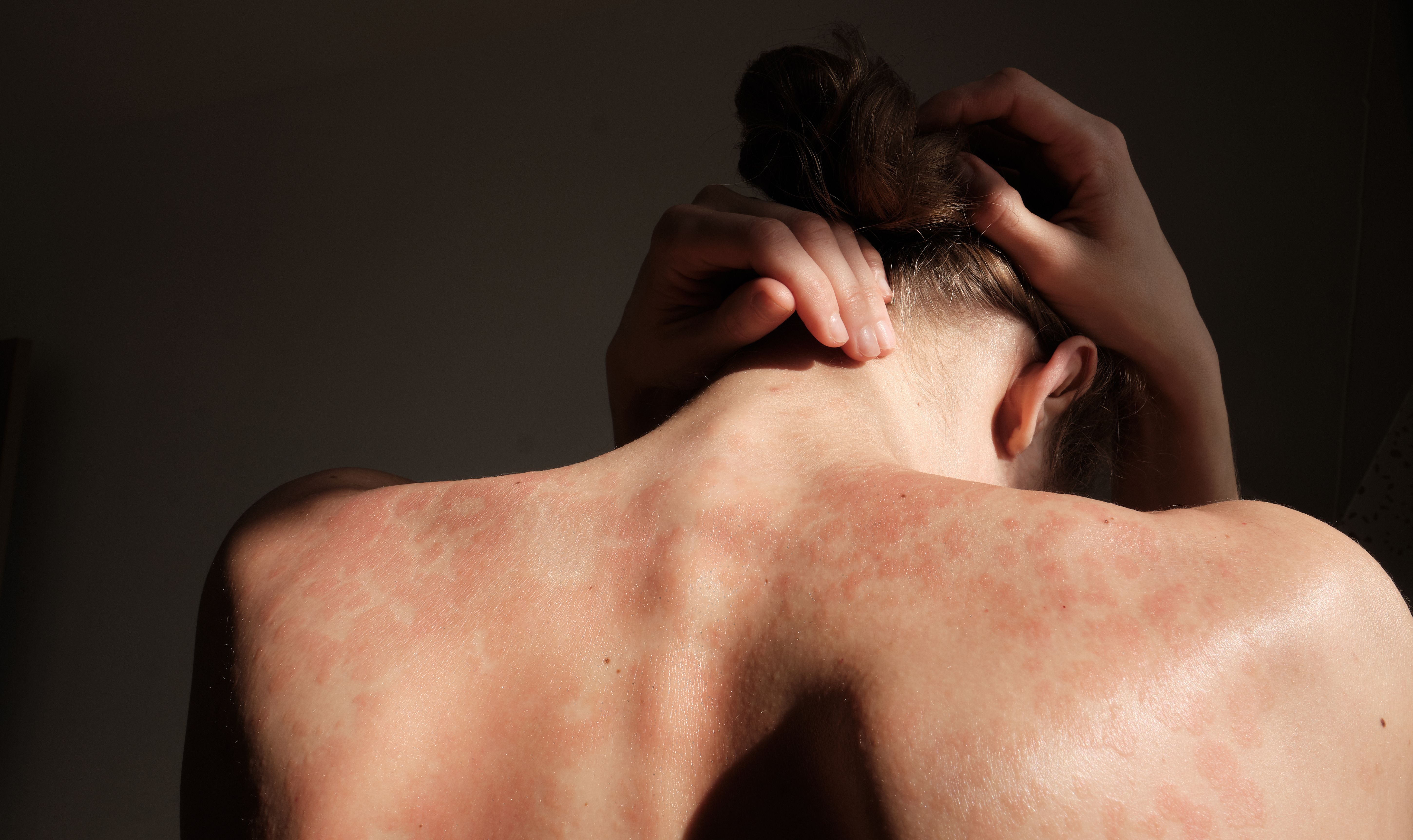- Acne
- Actinic Keratosis
- Aesthetics
- Alopecia
- Atopic Dermatitis
- Buy-and-Bill
- COVID-19
- Case-Based Roundtable
- Chronic Hand Eczema
- Chronic Spontaneous Urticaria
- Drug Watch
- Eczema
- General Dermatology
- Hidradenitis Suppurativa
- Melasma
- NP and PA
- Pediatric Dermatology
- Pigmentary Disorders
- Practice Management
- Precision Medicine and Biologics
- Prurigo Nodularis
- Psoriasis
- Psoriatic Arthritis
- Rare Disease
- Rosacea
- Skin Cancer
- Vitiligo
- Wound Care
News
Article
Extended Guselkumab Dosing Proven Effective for Psoriasis
Author(s):
Both 8-week and 16-week dosing intervals of guselkumab achieved similar clinical outcomes and patient-reported responses in the GUIDE trial.
Image Credit: © stockmaster - stock.adobe.com

Guselkumab, an antibody targeting interleukin (IL)-23, is used to treat moderate to severe psoriasis and psoriatic arthritis, typically administered every 8 weeks after initial doses.1 The GUIDE clinical trial, a phase 3b study, investigatedwhether extending the dosing interval of guselkumab from every 8 weeks to every 16 weekswould be effective for patients who achieve early and complete skin clearance (super responders (SRes)). The trial aimed to show that this extended interval is noninferior to the shorter one for maintaining disease control, as well as investigate long-term effects, including clinical and immunologic responses.2
Methods and Study Design
During the first phase of the trial (weeks 0-28), patients received 100 mg guselkumab at weeks 0, 4, 12, and 20. In the second phase (weeks 28-68), SRes were randomly assigned to continue treatment every 8 weeks (group 2A) or every 16 weeks (group 2B), while non-SRes continued with 8-week dosing. In the third phase (weeks 68-220), SRes with low disease activity were either withdrawn from treatment or retreated if their condition worsened.
Patients included in the study had moderate to severe psoriasis, defined by Psoriasis Area and Severity Index (PASI)higher than 10 or affected body surface area (BSA) greater than 10%, and Dermatology Life Quality Index (DLQI) greater than 10 at baseline.
Results
Overall, 880 patients were enrolled in the trial, with 822 receiving treatment in part 2. Among these, 297 (36.1%) were SRes, who were split into 2 groups: 148 continued guselkumab every 8 weeks, and 149 switched to every 16 weeks. The remaining 525 non-super responders (non-SRes) continued with the 8-week regimen.
Researchers stated that baseline characteristics were similar between the SRes groups in terms of disease duration, age, BMI, PASI scores, and DLQI scores, though the 8-week group had slightly fewer patients with prior biologic therapy. Compared to non-SRes, researchers noted SRes had shorter disease duration, were younger, had lower BMI, and were less likely to have used prior biologics.
The study stated the primary endpoint, assessing noninferiority of 16-week versus 8-week dosing for maintaining PASI <3, was met. Both dosing intervals achieved similar effectiveness (approximately 92% of SRes in each group), confirming to researchers that extending the dosing interval did not significantly affect disease control.
Secondary outcomes showed slightly higher rates of PASI ≤1 and PASI = 0 with the 8-week dosing compared to the 16-week dosing. Researchers stated both dosing intervals similarly improved mean PASI and affected BSA over time, and no significant differences were found in PASI 75 or PASI 90 responses.
The study found quality-of-life outcomes were high and consistent across dosing intervals. Non-SRes also demonstrated significant improvement, though not as pronounced as SRes. Regarding safety, the study found 70.2% of patients experienced treatment-emergent adverse events, with nasopharyngitis and headache being the most common.
Conclusion and Moving Forward
The GUIDE trial is the first study to demonstrate that guselkumab can effectively maintain psoriasis control with an extended dosing interval of every 16 weeks, showing noninferiority compared to the standard 8-week dosing schedule. The trial also found that although the 8-week interval achieved slightly better clinical outcomes and patient-reported responses, both dosing regimens effectively suppressed key inflammatory biomarkers and TRM cells in the skin. These results suggest that extending the dosing interval does not compromise efficacy, supporting the potential for dosing flexibility in long-term psoriasis management. Future analyses from the GUIDE trial are set to explore the relationship between clinical responses, biomarkers, and pharmacokinetics, and further investigate the sustainability of disease control after treatment withdrawal.
References
- Reich K, Armstrong AW, Foley P, et al. Efficacy and safety of guselkumab, an anti-interleukin-23 monoclonal antibody, compared with adalimumab for the treatment of patients with moderate to severe psoriasis with randomized withdrawal and retreatment: Results from the phase III, double-blind, placebo- and active comparator-controlled VOYAGE 2 trial. J Am Acad Dermatol. 2017;76(3):418-431. doi:10.1016/j.jaad.2016.11.042
- Eyerich K, Asadullah K, Pinter A, et al. Noninferiority of 16-week vs 8-week guselkumab dosing in super responders for maintaining control of psoriasis: The GUIDE randomized clinical trial. JAMA Dermatol. 2024 Jul 31:e242463. doi: 10.1001/jamadermatol.2024.2463.
Newsletter
Like what you’re reading? Subscribe to Dermatology Times for weekly updates on therapies, innovations, and real-world practice tips.







